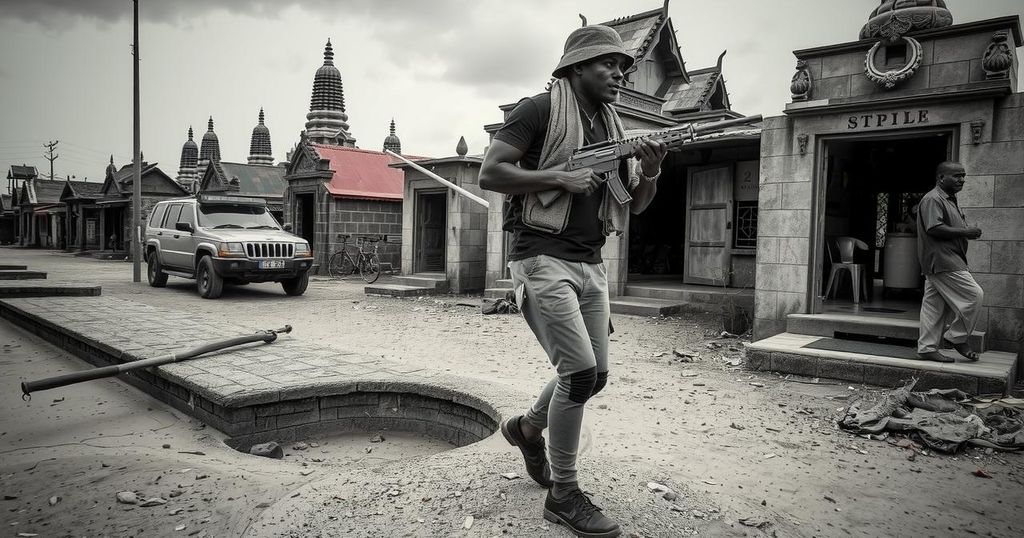The Khmer Rouge Regime: A Tragic Chapter in Cambodian History

In March 1970, Prince Sihanouk was removed from power, leading to a civil conflict in Cambodia. Lon Nol’s government faced setbacks against communist forces and a destructive U.S. bombing campaign. By April 1975, the Khmer Rouge, led by Pol Pot, seized control, initiating radical reforms that resulted in the deaths of approximately 1.5 million Cambodians. The regime’s extreme measures drew global condemnation as the extent of the human rights violations became evident, marking one of history’s gravest tragedies.
In March 1970, Prince Sihanouk was ousted as head of state by the National Assembly while he was abroad, leading to Lon Nol’s assumption of government control. Upon learning of the coup, Sihanouk sought refuge in Beijing, where he formed a coalition with Chinese and North Vietnamese support, ultimately aligning with Cambodian communist forces. The Lon Nol regime enjoyed initial popularity for its promise to expel Vietnamese troops, yet this escalated Cambodia’s involvement in the broader Vietnam War, prompting a U.S. and South Vietnamese invasion. Although Lon Nol’s forces maintained a defensive position following considerable military setbacks, the Cambodian communists gained significant strength with a decline in North Vietnamese backing. A massive American bombing campaign targeted communist strongholds in 1973, significantly impacting the civilian population and agricultural landscape.
The civil conflict persisted until April 1975, when Lon Nol’s government collapsed under the weight of oppressive communist advances. Following the regime’s fall, the Khmer Rouge, under the leadership of Pol Pot, imposed radical reforms aimed at quickly transforming Cambodia into an agrarian socialist state, abolishing the monetary system, private property, and all modern institutions. This resulted in widespread purges and forced displacements, causing the demise of approximately 1.5 million Cambodians, representing 20 percent of the population, due to starvation, overwork, disease, and executions.
The Khmer Rouge’s brutal regime was marked by extreme collectivization efforts that mirrored earlier catastrophic policies seen in Stalinist Russia and Maoist China. The leadership’s paranoia led to horrific human rights violations, such as the notorious tortures and killings at the S-21 prison, where even loyal party members were not spared. The collective trauma inflicted on the Cambodian population remains a profound scar in the nation’s history, while the global community increasingly recognized and condemned these acts as they unfolded. The events of this period serve as a stark reminder of the potential for ideology-driven atrocities in human societies.
The Cambodian civil war and the Khmer Rouge regime emerged during a tumultuous period marked by the geopolitical complexities of the Vietnam War. Following the ousting of Sihanouk, the conflict rapidly escalated as factions within Cambodia struggled for power, often influenced by external forces. The Khmer Rouge, under Pol Pot, sought to radically transform Cambodian society in a bid to create an egalitarian agrarian state, leading to catastrophic human suffering. The legacy of this period is one of profound tragedy and represents one of the darkest chapters in modern history, illustrating the consequences of extremist ideologies and political struggles.
The events surrounding the Cambodian civil war highlight the devastating impact of political upheaval and extremist ideologies on civilian populations. The rise and rule of the Khmer Rouge resulted in unparalleled social upheaval and a staggering loss of life. The harsh realities faced by Cambodians during this period necessitate continued reflection and commitment to preventing future atrocities, ensuring that the lessons of history are not forgotten.
Original Source: www.britannica.com








